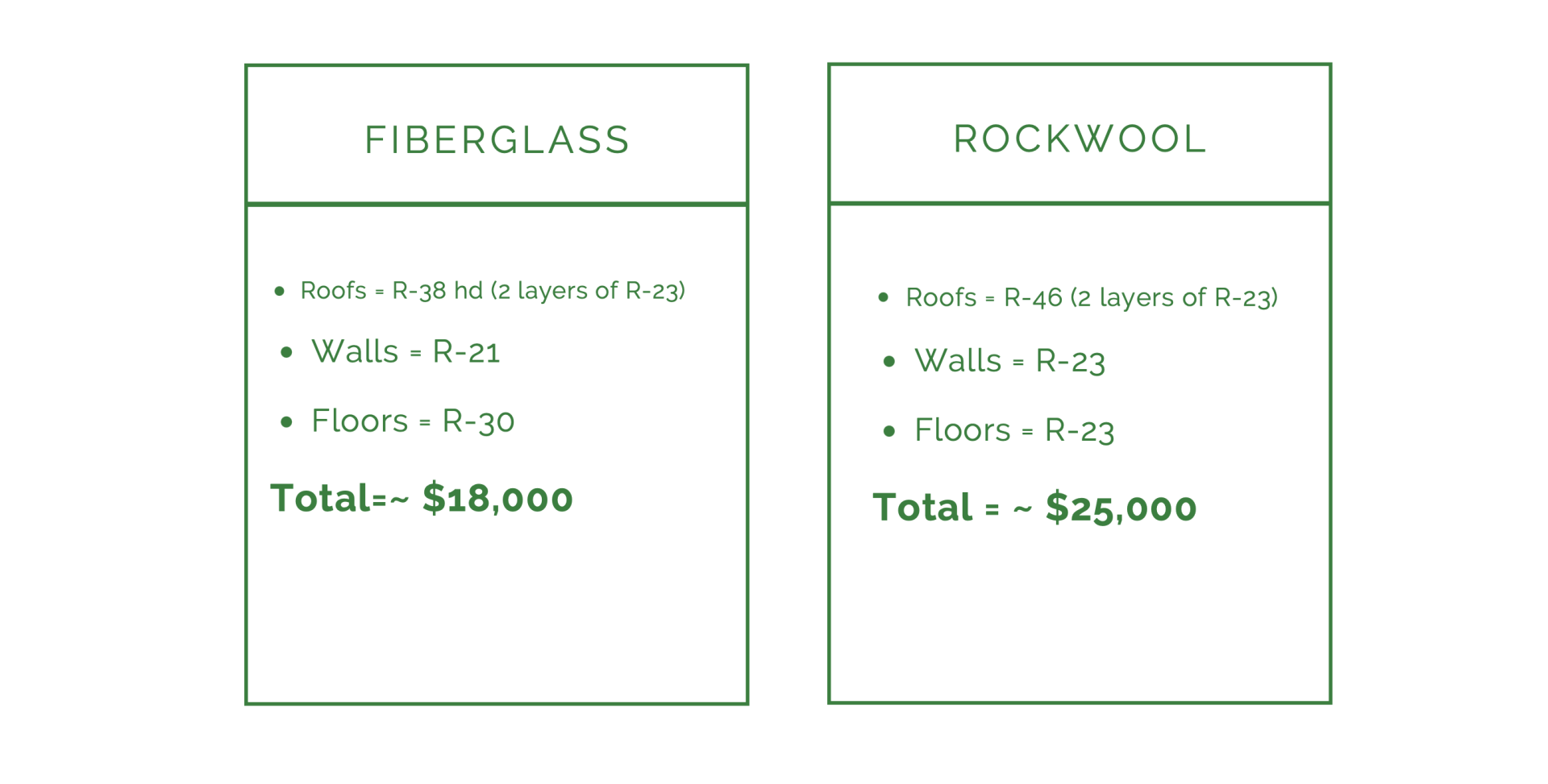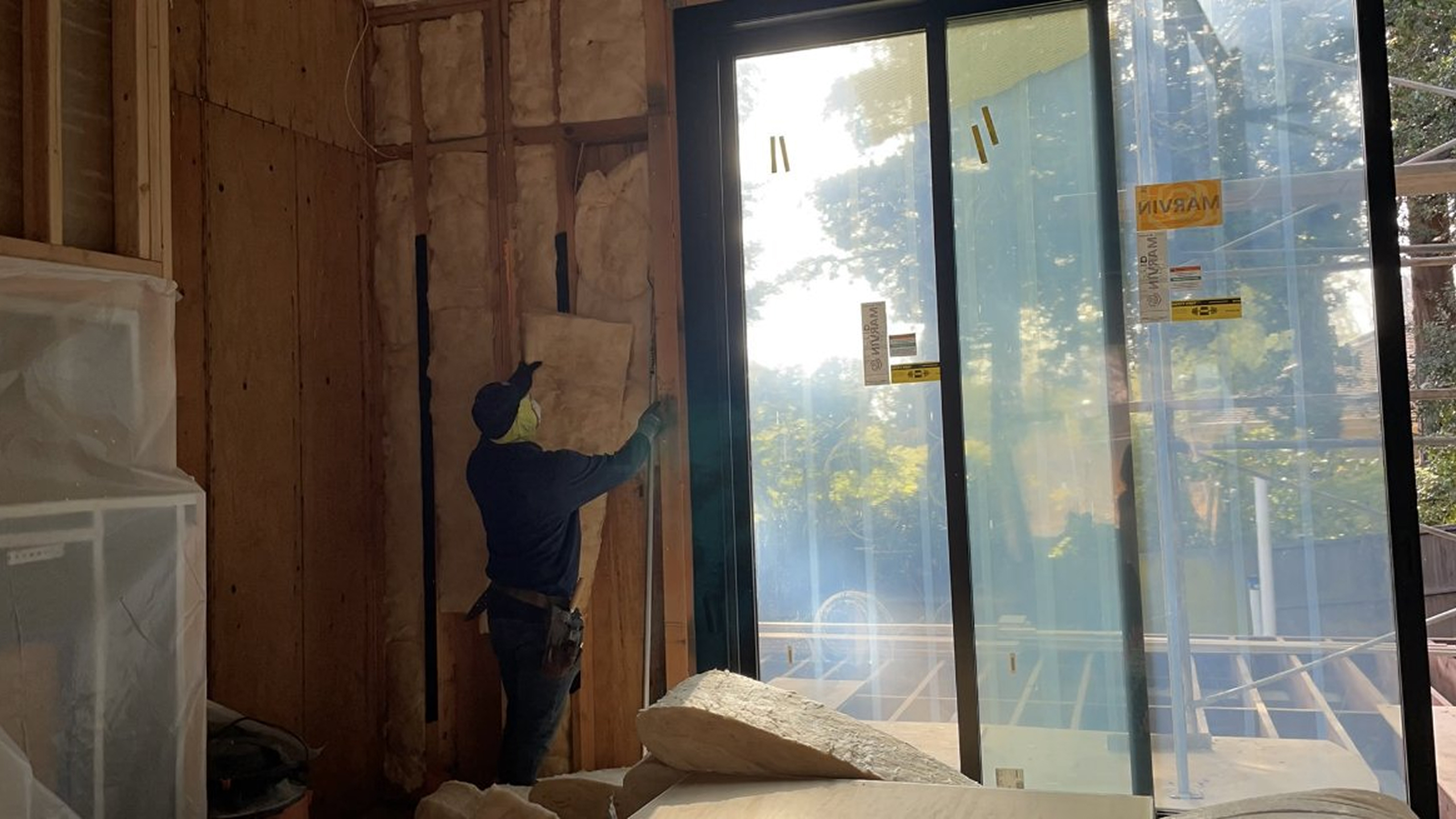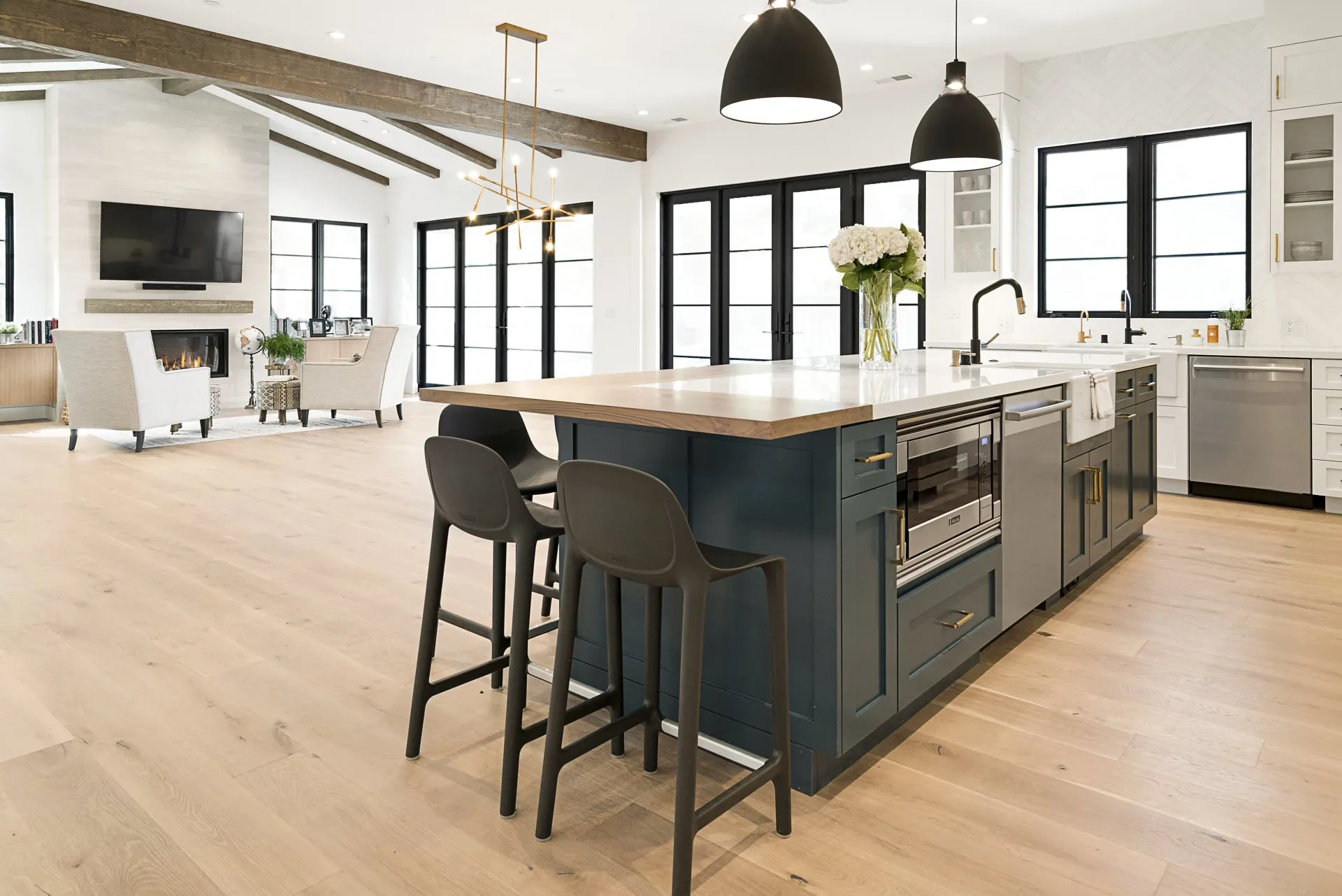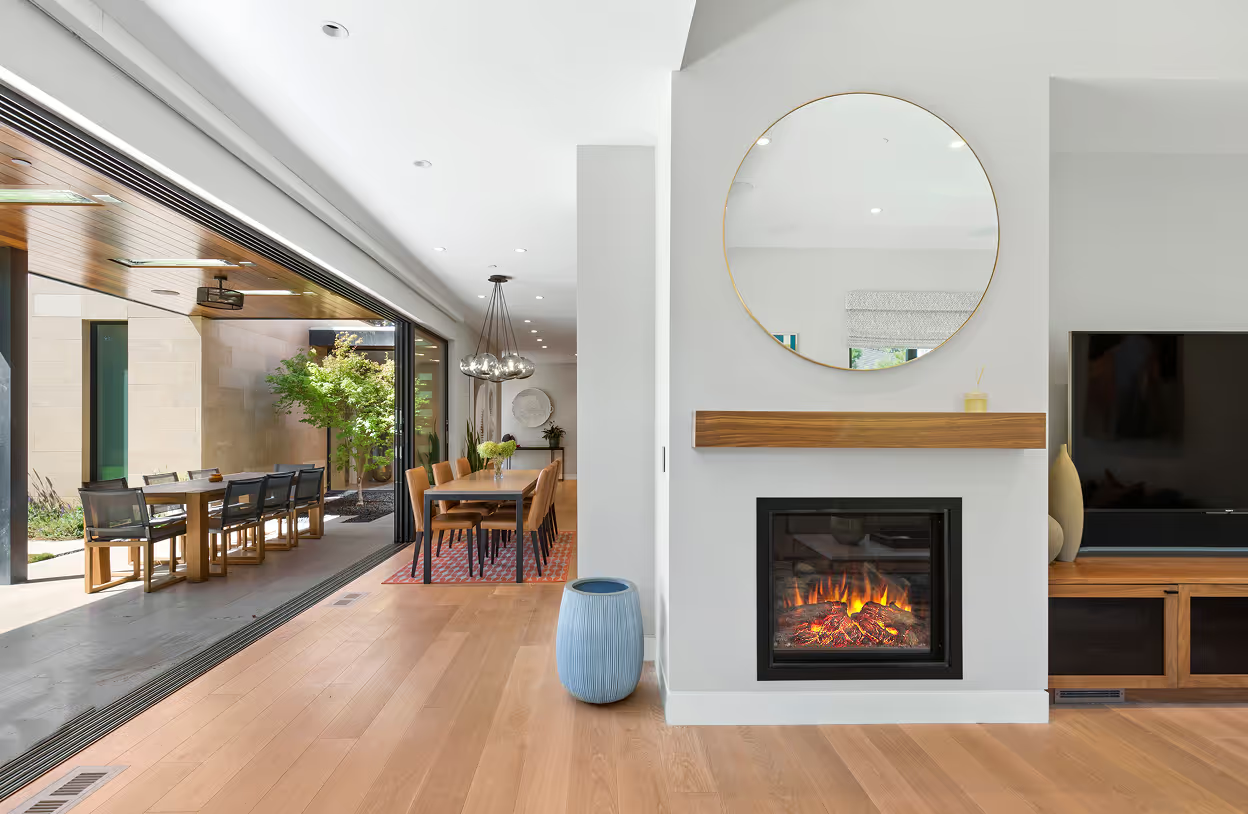The look of Batt insulation is unmistakable: fibrous and fluffy. Batt insulation, also known as blanket insulation, is a popular choice of insulation for many homeowners and builders. It is available in convenient rolls or in pre-cut industry standard widths and comes in many different R-values. There are various types of Batt insulation such as cellulose, natural fibers, and plastic, but two of the most common types are fiberglass and Rockwool.
Benefits of Batt Insulation
The manufacturing process for Rockwool and fiberglass Batt insulation is quite similar in that they are both made of melted down minerals that are then spun into fiber-like strands. Fiberglass insulation is made of sand, soda ash, limestone, and recycled glass, whereas Rockwool insulation is made of basalt rock, slag, coke, and recycled Rockwool waste. Both are made out of recycled materials, with fiberglass comprising 30% and mineral wool 25-30%.
One of the advantages of Batt insulation is that it is simple to install. Yes, hiring a professional to install the insulation would be faster and less likely to have errors, but installing Batt insulation as a DIY project is possible.
Keep in mind that if Batt insulation is not installed properly (compressed Batts and/or there are gaps left between Batts), insulation efficiency may be lowered by 25% or more.
Batt insulation is lightweight and can be installed with minimal tools. It is ideal for studs and joists in between framing and can be used in virtually any part of your home, including walls, ceilings, attics, and floors.

Fiberglass vs. Rockwool: Which is Better?
Both fiberglass and Rockwool can be easily cut into the desired shape with a serrated knife, but Rockwool, unlike fiberglass, does not need to be stapled in place due to its density and rigidity.
One benefit of Rockwool that fiberglass BATT insulation does not have is hydrophobic properties. Rockwool is naturally water-resistant, and instead of water absorbing into the insulation, it will run right off. Its resistance to moisture means that it does not promote the growth of mold, mildew, and other bacteria. Rockwool is also naturally fire-resistant up to 2,000 degrees fahrenheit.
Fiberglass Batt insulation is not water- or fire-resistant, but there are versions available with either aluminum foil or paper backings that function as a water barrier, preventing internal heat from leaving and water vapor from flowing through the insulation.
Another advantage of Rockwool Batt insulation is that it reduces unwanted noise. Because of its density, Rockwool is excellent at muffling sound transmission.
Batt Insulation R-Value and Durability
Batt insulation is available in a variety of R-values, making it easy to find an option that meets your home's specific requirements. Different types of insulation have different R-values, and the higher the R-value, the better the building's climate control. Rockwool insulation is more dense and has a greater R-value than fiberglass Batt insulation.
The insulating property of both Rockwool and fiberglass is dependent on the air trapped between the fibers, which is why it is critical to avoid compressing the insulation. If it is compressed, the trapped air is lost and the R-value is significantly compromised.
Rockwool insulation is more durable than fiberglass Batt insulation. Fiberglass, unlike Rockwool, is neither water- nor fire-resistant and if exposed to water, it may become damaged, promote the growth of mold and mildew, and lose its insulating properties. Additionally, because fiberglass is lighter and fluffier, it is more prone to sagging, shrinking, and can deteriorate over time.
Insulation Efficiency
For maximum efficiency, Batt insulation must be installed correctly and should never be packed tightly into an area or compressed, as this will compromise the R-value.
Both types of Batt insulation help to filter out cold air to some extent, but they do not establish a full air seal like other types of insulation. When properly installed, fiberglass and Rockwool Batt insulation can reduce the amount of energy required to cool and heat a home by up to 50%.
How Much Does Batt Insulation Cost?
You pay by square foot for Batt insulation, and the price varies based on how much space you need to cover and the R-value you need to achieve. The cost will also differ depending on whether you hire someone to install the insulation or do it yourself.
When considering only the cost of materials, fiberglass insulation is by far less expensive than Rockwool—31.25 square feet of R-30 unfaced fiberglass Batt insulation costs $31.48 at Home Depot, whereas 30.75 square feet of Rockwool Batt insulation costs $52.98 at Lowes, almost double the price of fiberglass.
In order to compare prices, we spoke with SDI insulation to get an idea of how much it would cost to have fiberglass and Rockwool Batt insulation professionally installed. The rates to insulate a 3,000 sq. ft. roof, 2,000 sq. ft. of walls, and 2,500 sq. ft. of floor are listed below:

Conclusion
Both Rockwool and fiberglass BATT insulation will effectively insulate your home, reduce sound transmission, and overall reduce the cost of your energy bill, but considering all of the factors mentioned above, Rockwool provides some advantages that fiberglass does not.
Rockwool is naturally water- and fire-resistant and it is much denser than fiberglass, so it will not sag or shrink over time. However, there is a significant price difference between the two, so if you're looking for a low-cost, DIY-friendly insulation for your home, fiberglass insulation is a great option.






